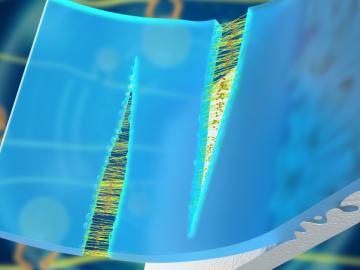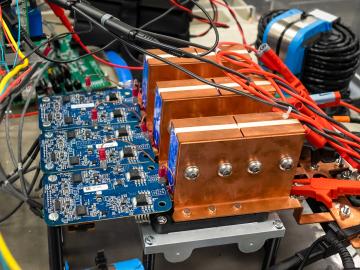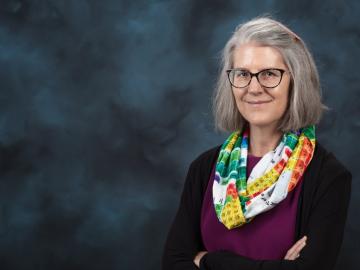
Filter News
Area of Research
- Advanced Manufacturing (3)
- Biological Systems (1)
- Biology and Environment (25)
- Computational Biology (1)
- Computational Engineering (1)
- Computer Science (3)
- Electricity and Smart Grid (1)
- Energy Science (47)
- Fuel Cycle Science and Technology (1)
- Fusion and Fission (30)
- Fusion Energy (5)
- Isotope Development and Production (1)
- Isotopes (10)
- Materials (32)
- Materials for Computing (2)
- National Security (39)
- Neutron Science (22)
- Nuclear Science and Technology (24)
- Quantum information Science (1)
- Sensors and Controls (1)
- Supercomputing (56)
News Type
News Topics
- (-) Artificial Intelligence (112)
- (-) Biomedical (59)
- (-) Cybersecurity (31)
- (-) Grid (48)
- (-) Machine Learning (50)
- (-) Nuclear Energy (94)
- (-) Security (28)
- (-) Space Exploration (16)
- (-) Statistics (3)
- 3-D Printing/Advanced Manufacturing (104)
- Advanced Reactors (24)
- Big Data (53)
- Bioenergy (93)
- Biology (106)
- Biotechnology (35)
- Buildings (45)
- Chemical Sciences (70)
- Clean Water (18)
- Composites (23)
- Computer Science (174)
- Coronavirus (36)
- Critical Materials (16)
- Education (5)
- Element Discovery (1)
- Emergency (3)
- Energy Storage (75)
- Environment (154)
- Exascale Computing (64)
- Fossil Energy (7)
- Frontier (60)
- Fusion (54)
- High-Performance Computing (113)
- Hydropower (6)
- Isotopes (53)
- ITER (6)
- Materials (111)
- Materials Science (111)
- Mathematics (8)
- Mercury (9)
- Microelectronics (4)
- Microscopy (40)
- Molten Salt (5)
- Nanotechnology (46)
- National Security (78)
- Neutron Science (136)
- Partnerships (67)
- Physics (60)
- Polymers (22)
- Quantum Computing (48)
- Quantum Science (79)
- Simulation (52)
- Software (1)
- Summit (62)
- Transportation (56)
Media Contacts

A team including researchers from the Department of Energy’s Oak Ridge National Laboratory has developed a digital tool to better monitor a condition known as Barrett’s esophagus, which affects more than 3 million people in the United States.

Research teams from the Department of Energy’s Oak Ridge National Laboratory and their technologies have received seven 2021 R&D 100 Awards, plus special recognition for a COVID-19-related project.

ORNL has licensed its wireless charging technology for electric vehicles to Brooklyn-based HEVO. The system provides the world’s highest power levels in the smallest package and could one day enable electric vehicles to be charged as they are driven at highway speeds.

As a medical isotope, thorium-228 has a lot of potential — and Oak Ridge National Laboratory produces a lot.

A new tool that simulates the energy profile of every building in America will give homeowners, utilities and companies a quick way to determine energy use and cost-effective retrofits that can reduce energy and carbon emissions.

Four first-of-a-kind 3D-printed fuel assembly brackets, produced at the Department of Energy’s Manufacturing Demonstration Facility at Oak Ridge National Laboratory, have been installed and are now under routine operating

Scientists at ORNL and the University of Wisconsin–Madison have discovered that genetically distinct populations within the same species of fungi can produce unique mixes of secondary metabolites, which are organic compounds with applications in

Kathy McCarthy, associate laboratory director for Fusion and Fission Energy and Science at the Department of Energy’s Oak Ridge National Laboratory, has been elected fellow of the American Nuclear Society for her nationally and internationally recognized leadership in nuclear energy and fusion.

An ORNL-led team comprising researchers from multiple DOE national laboratories is using artificial intelligence and computational screening techniques – in combination with experimental validation – to identify and design five promising drug therapy approaches to target the SARS-CoV-2 virus.

Deborah Frincke, one of the nation’s preeminent computer scientists and cybersecurity experts, serves as associate laboratory director of ORNL’s National Security Science Directorate. Credit: Carlos Jones/ORNL, U.S. Dept. of Energy


